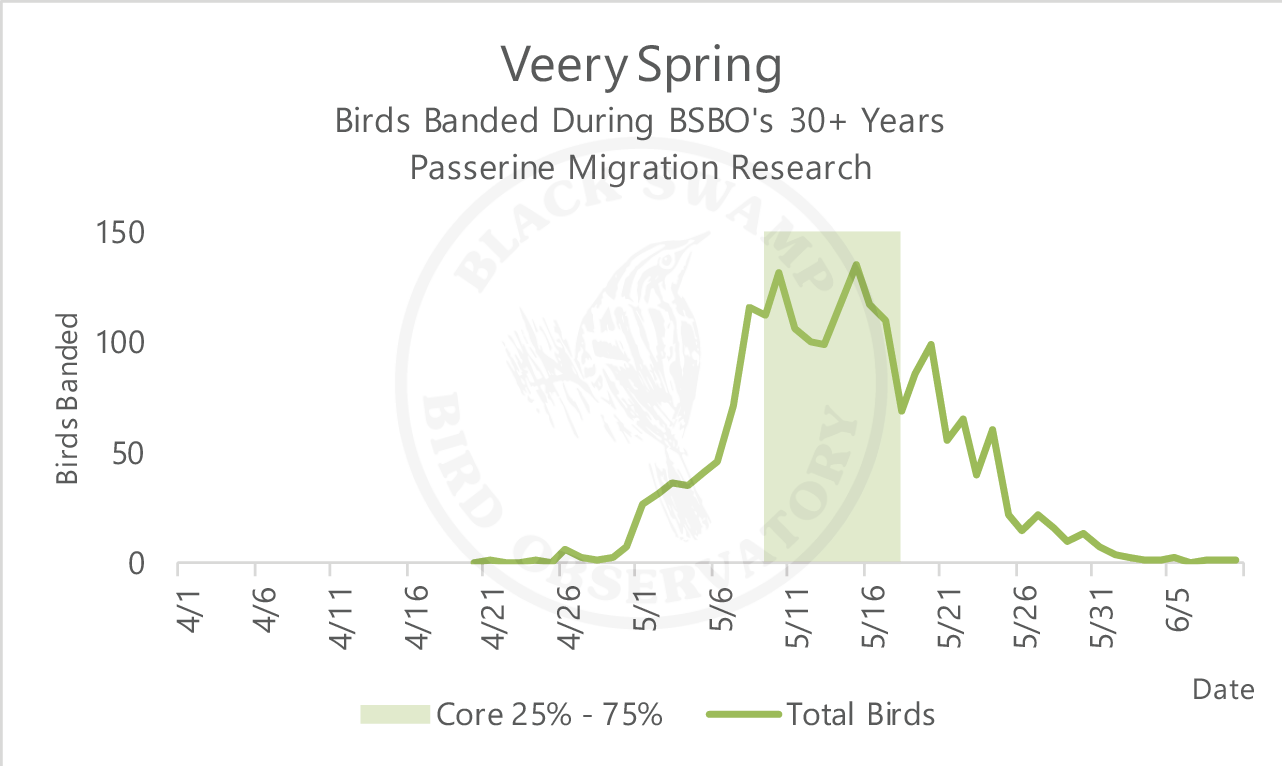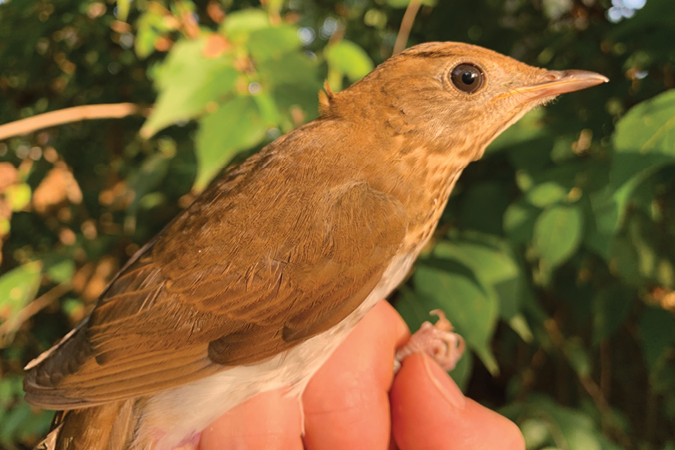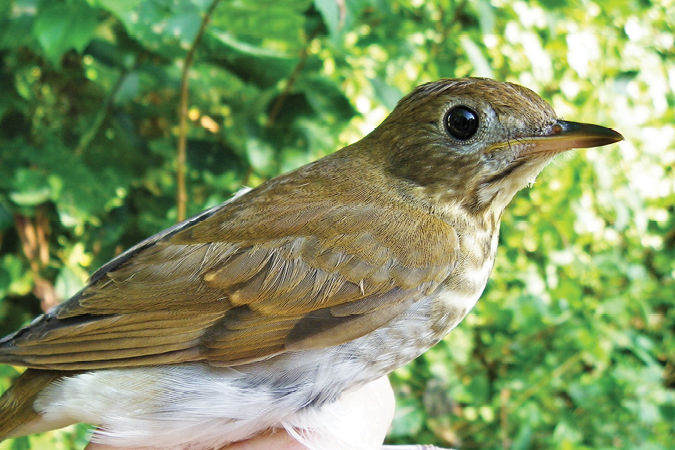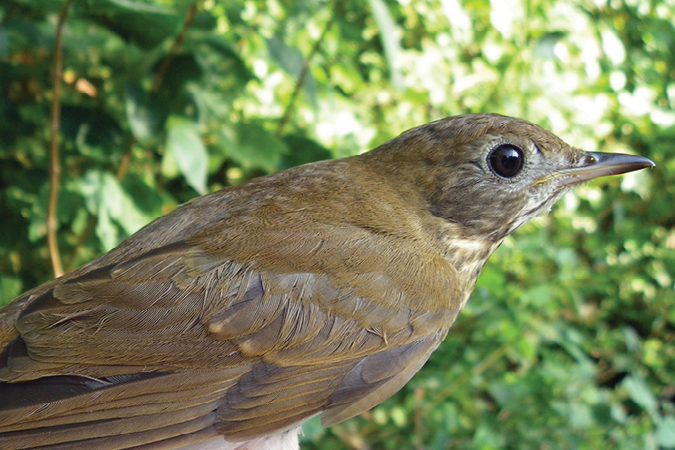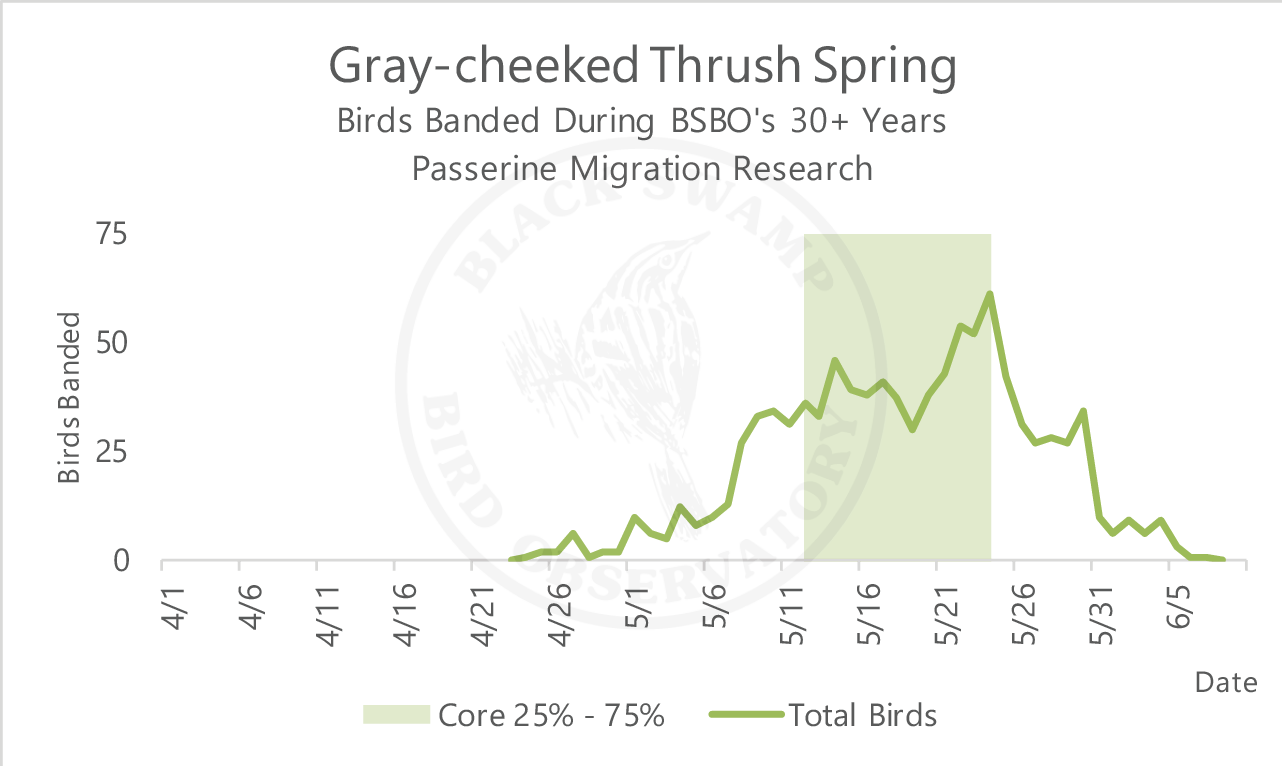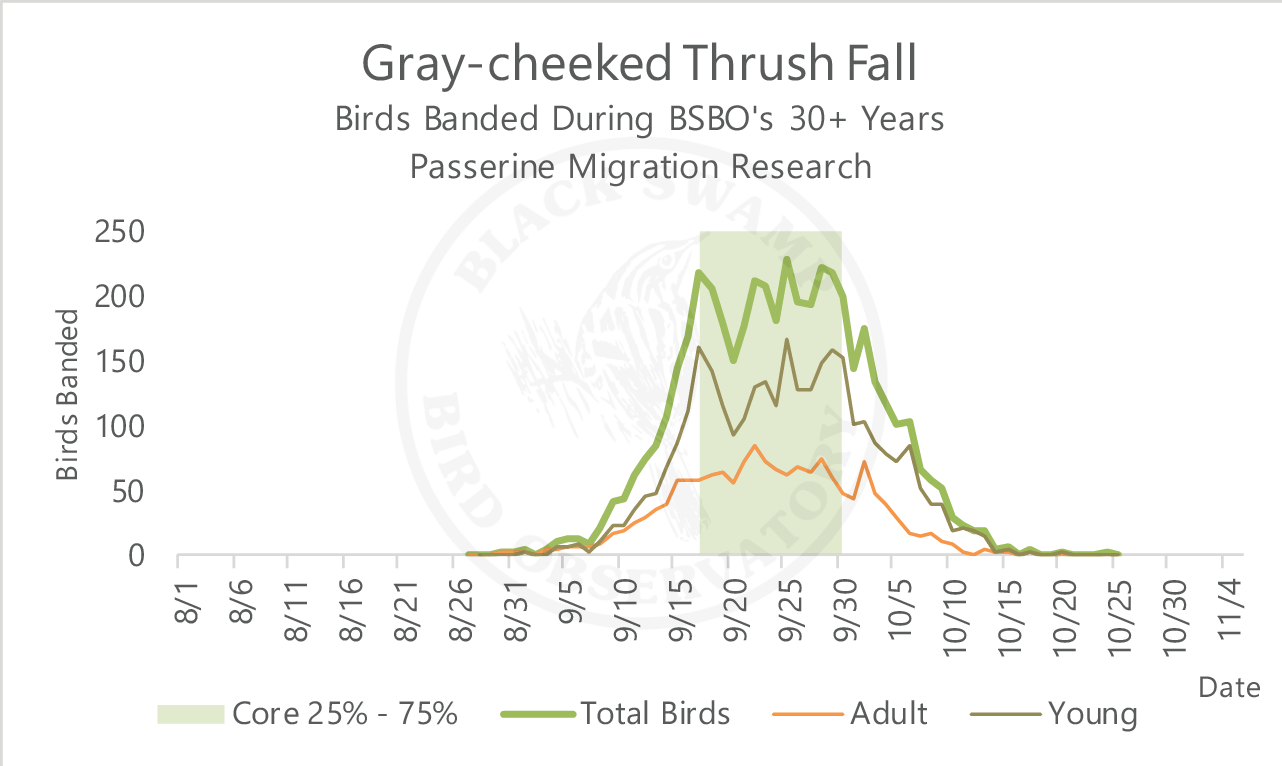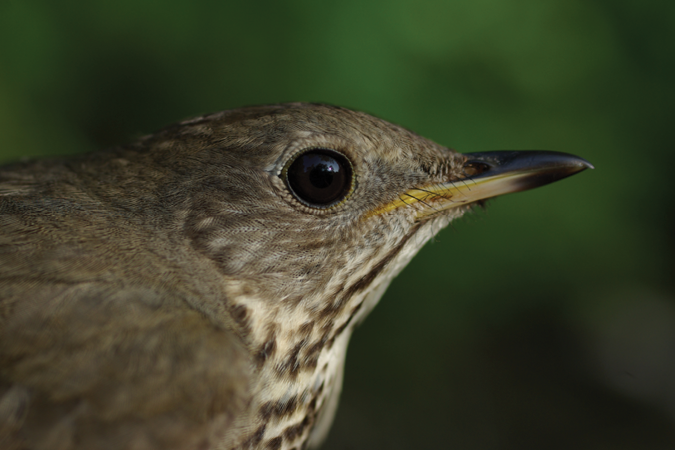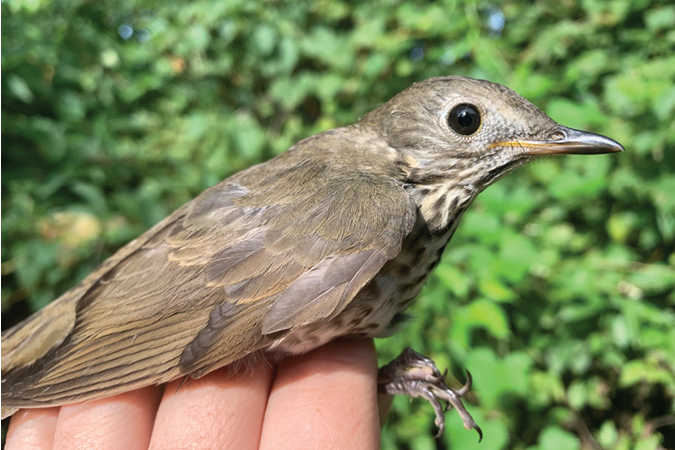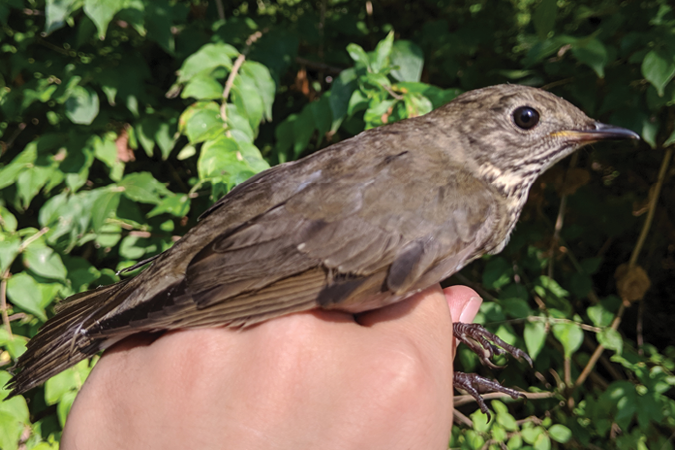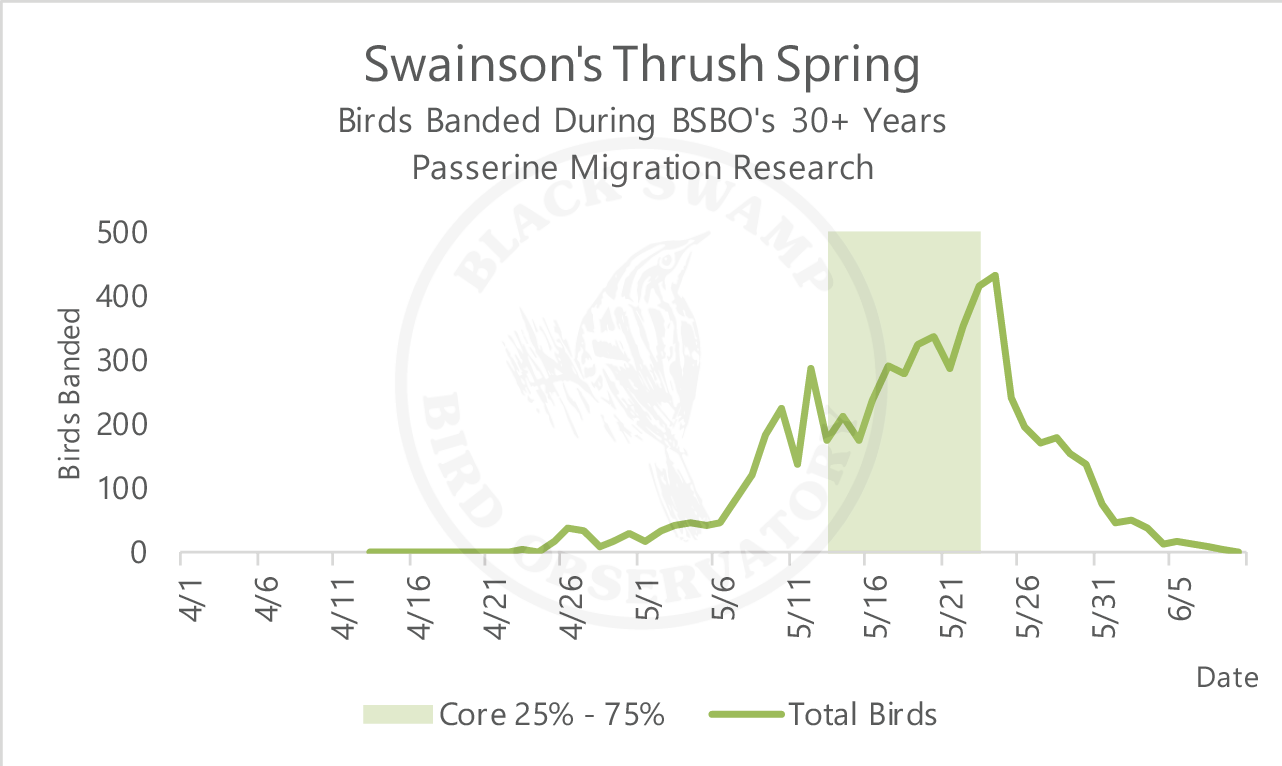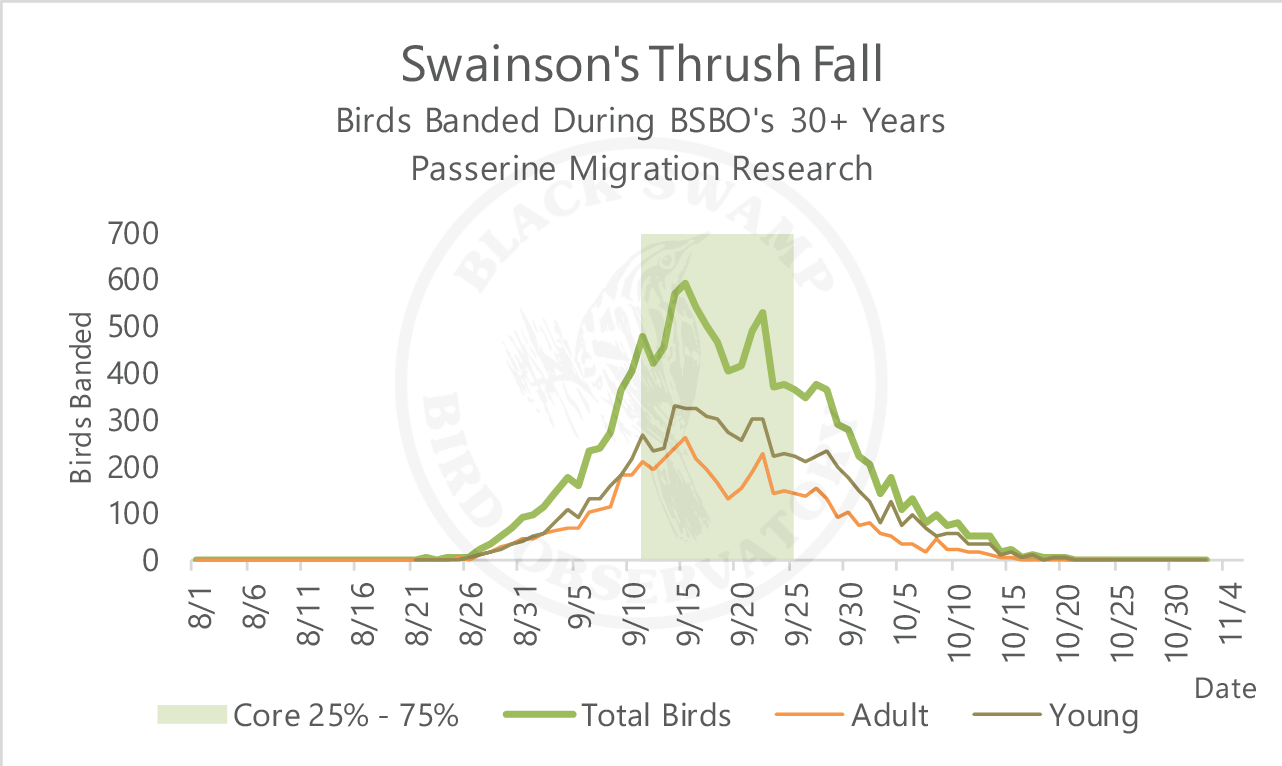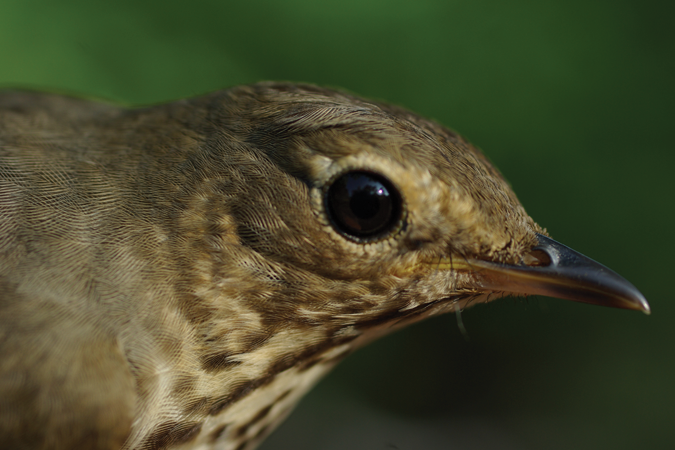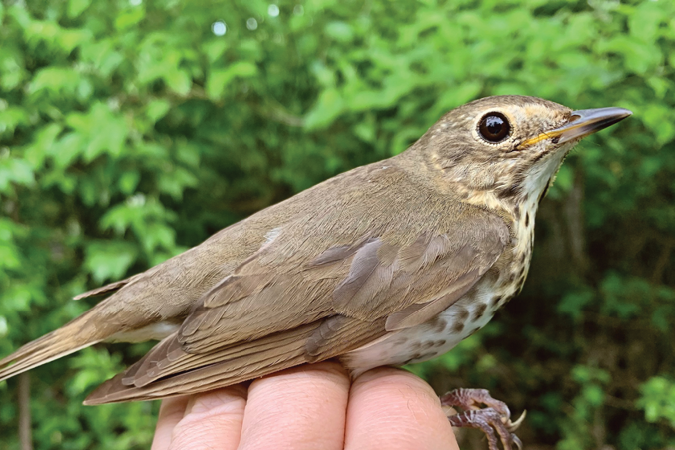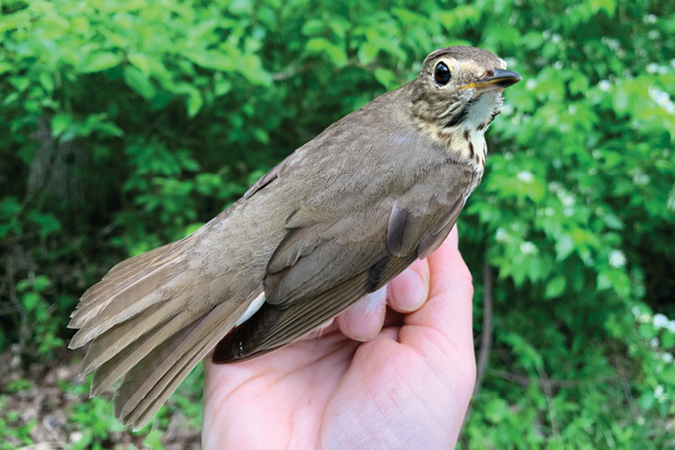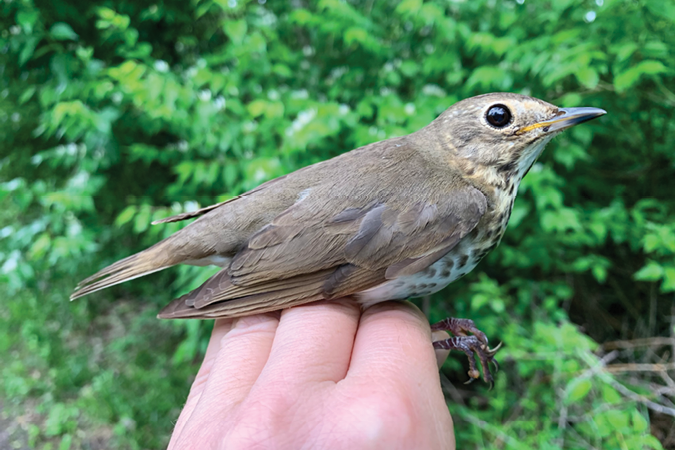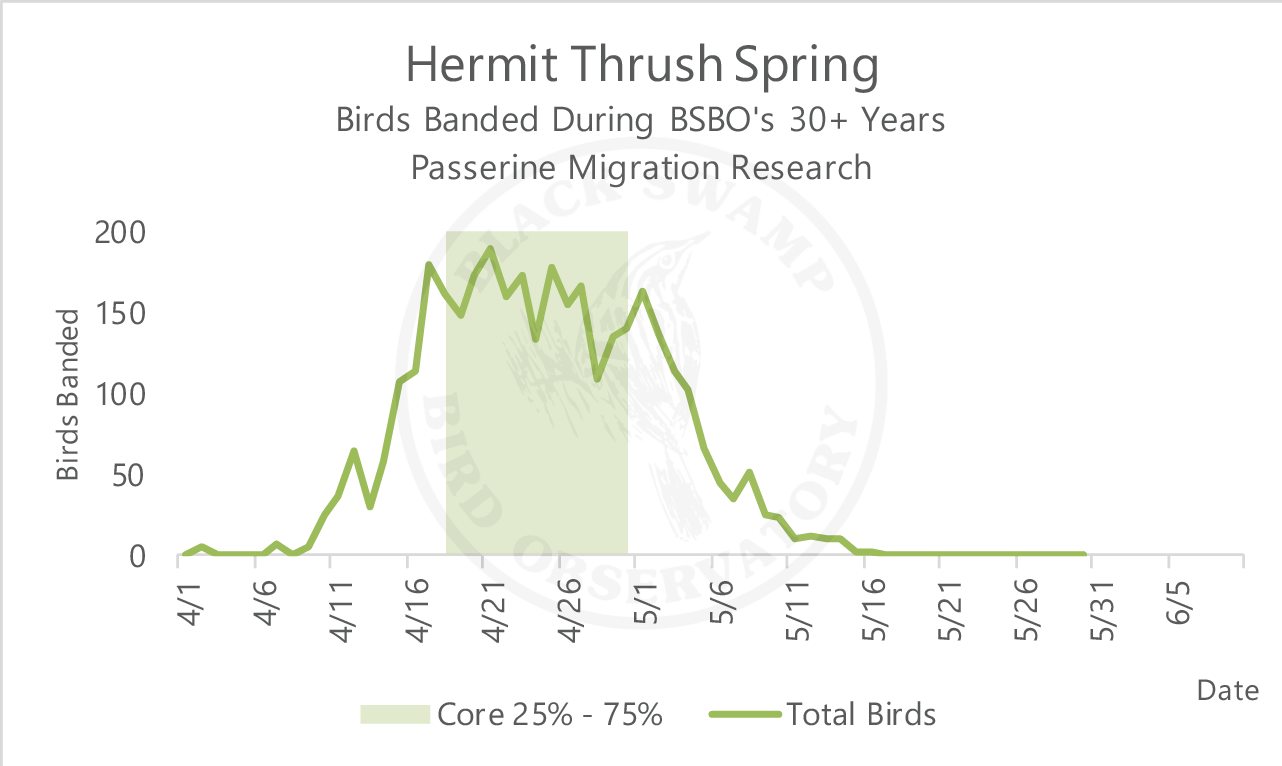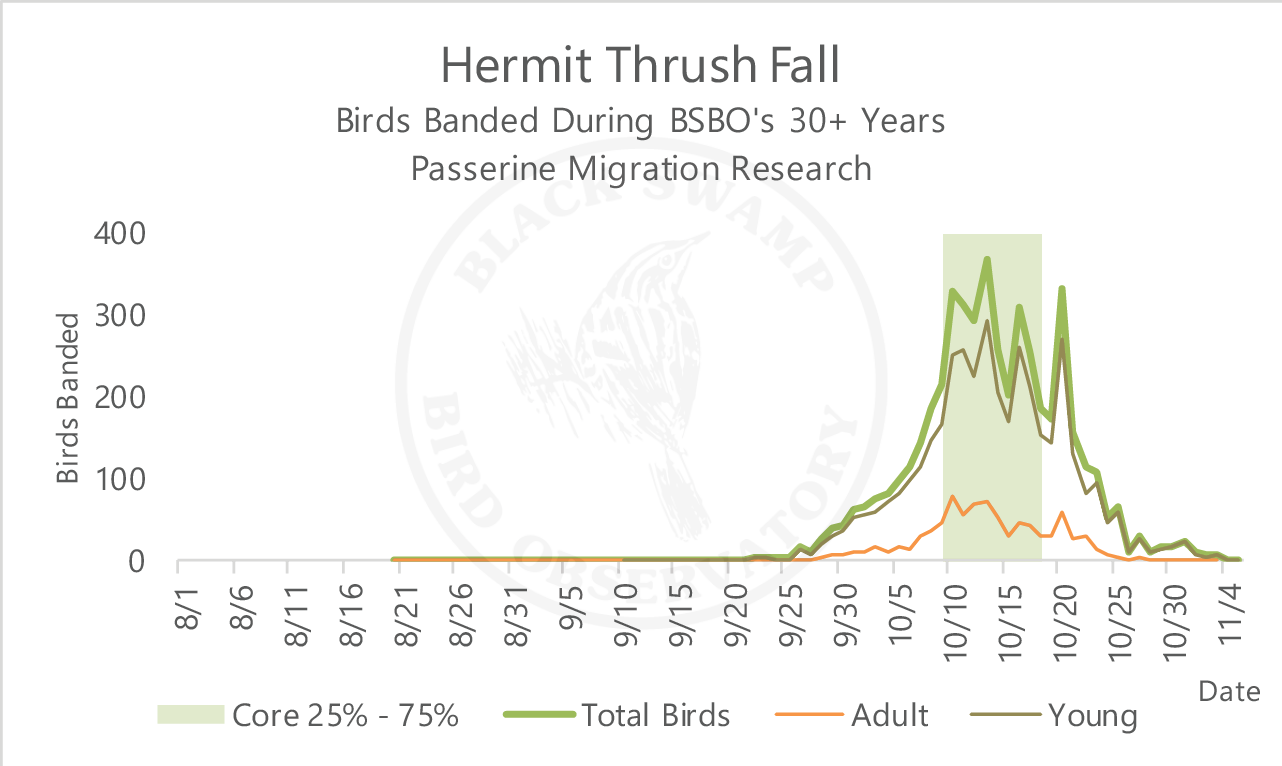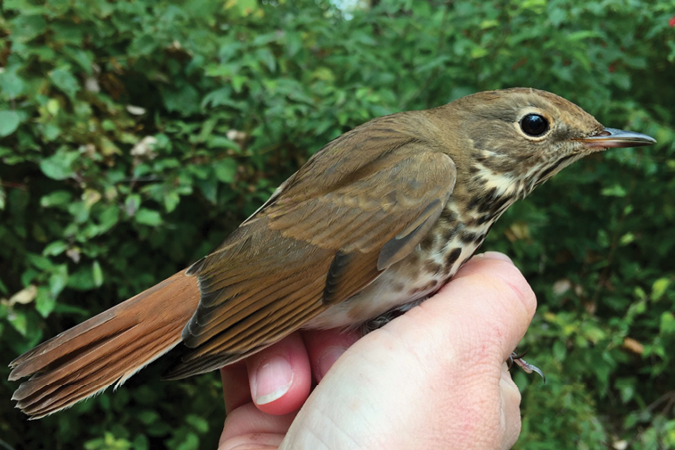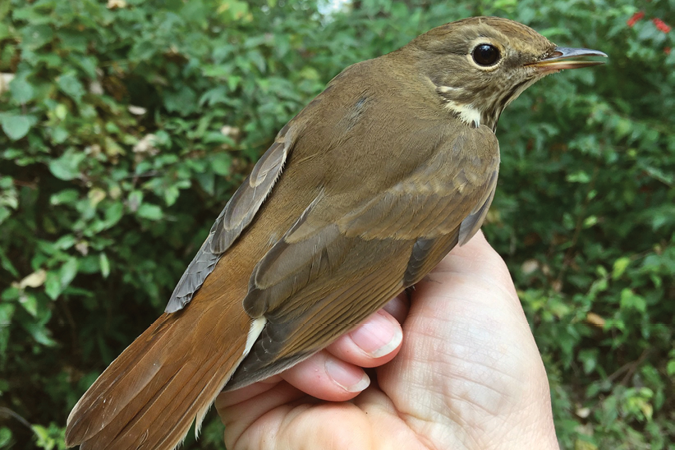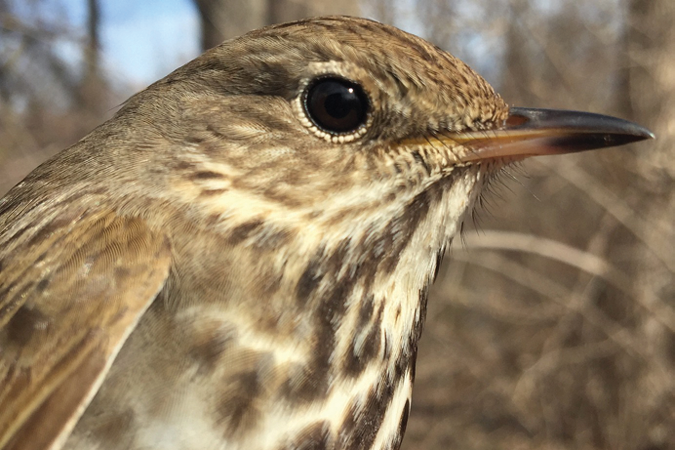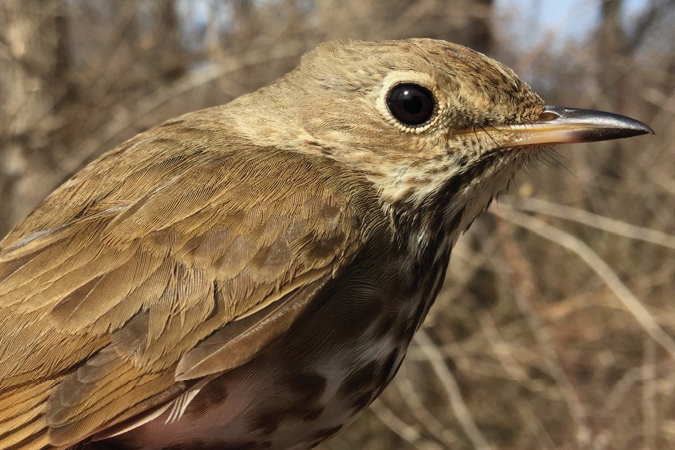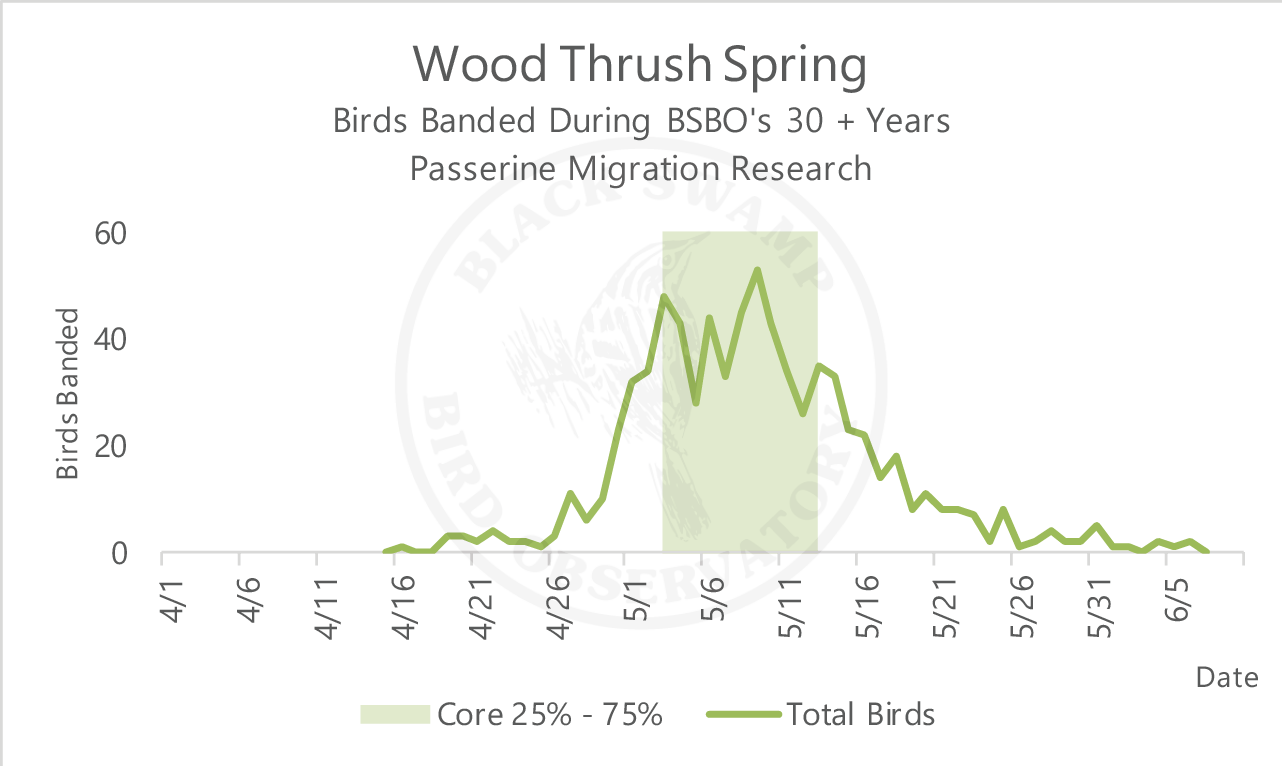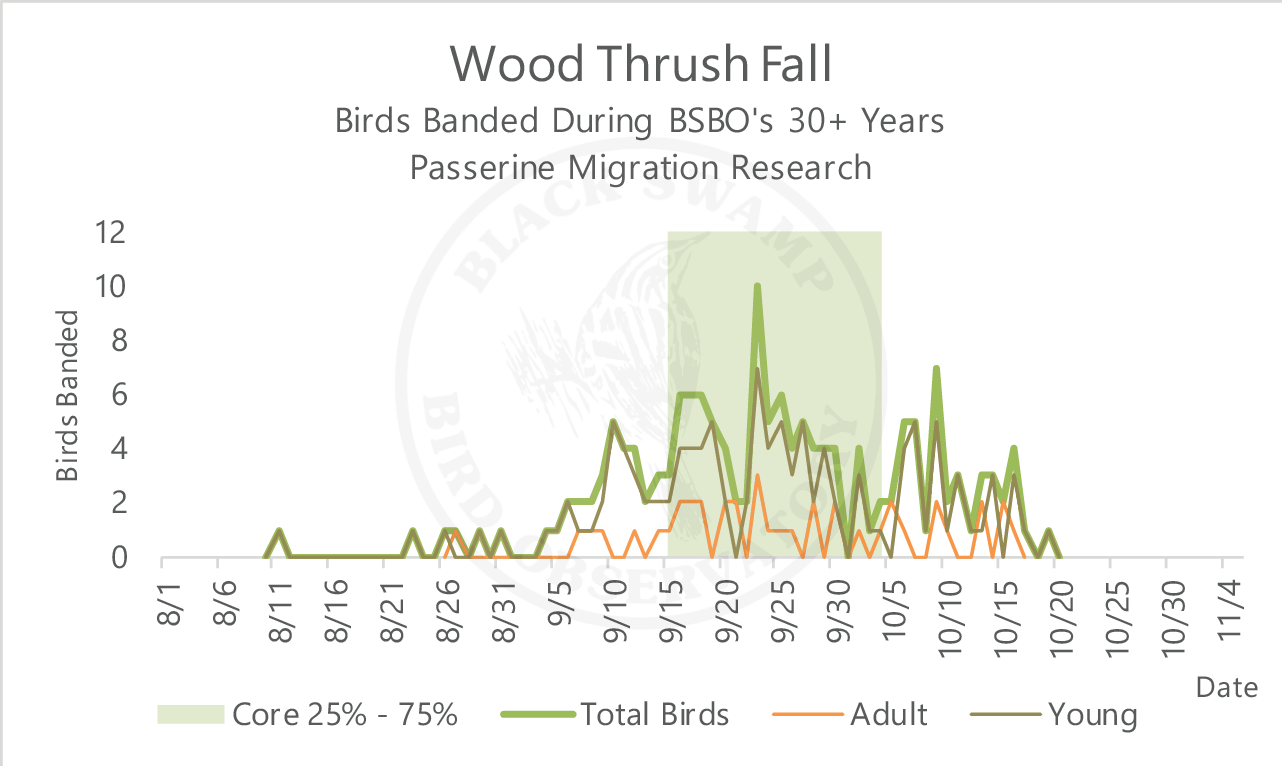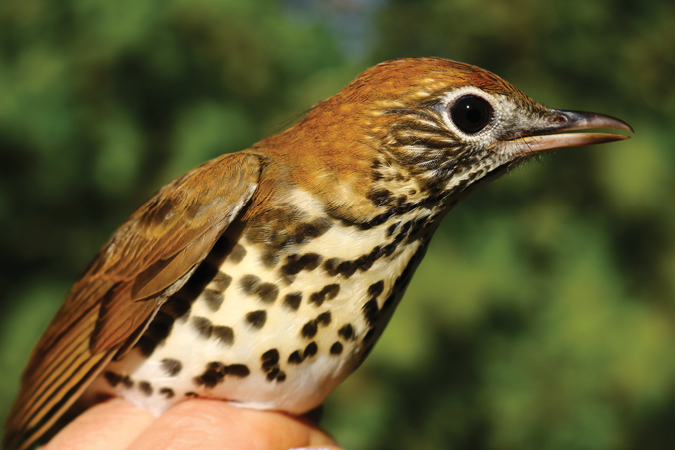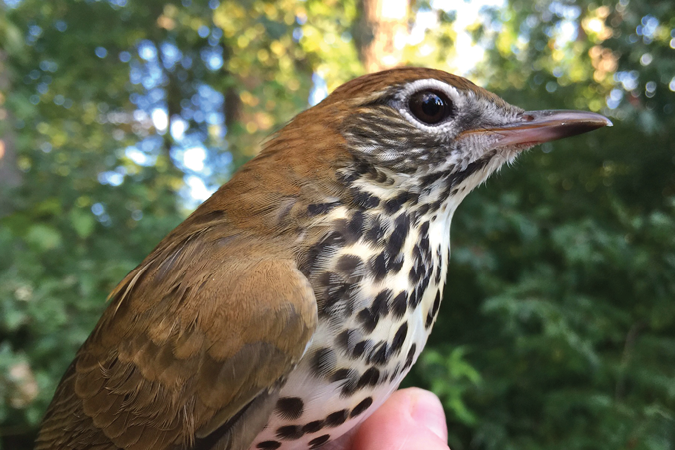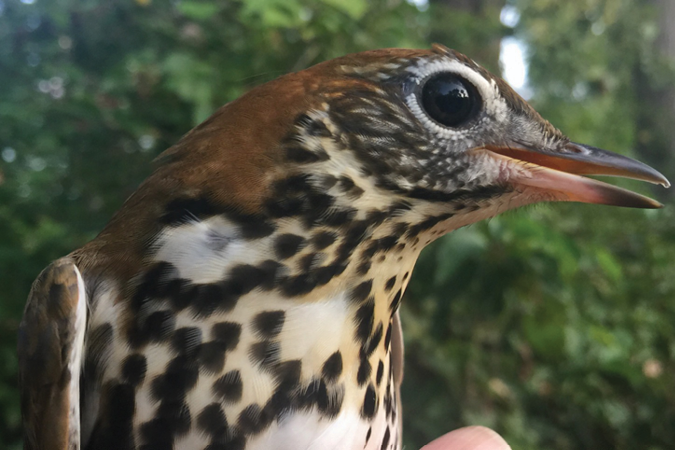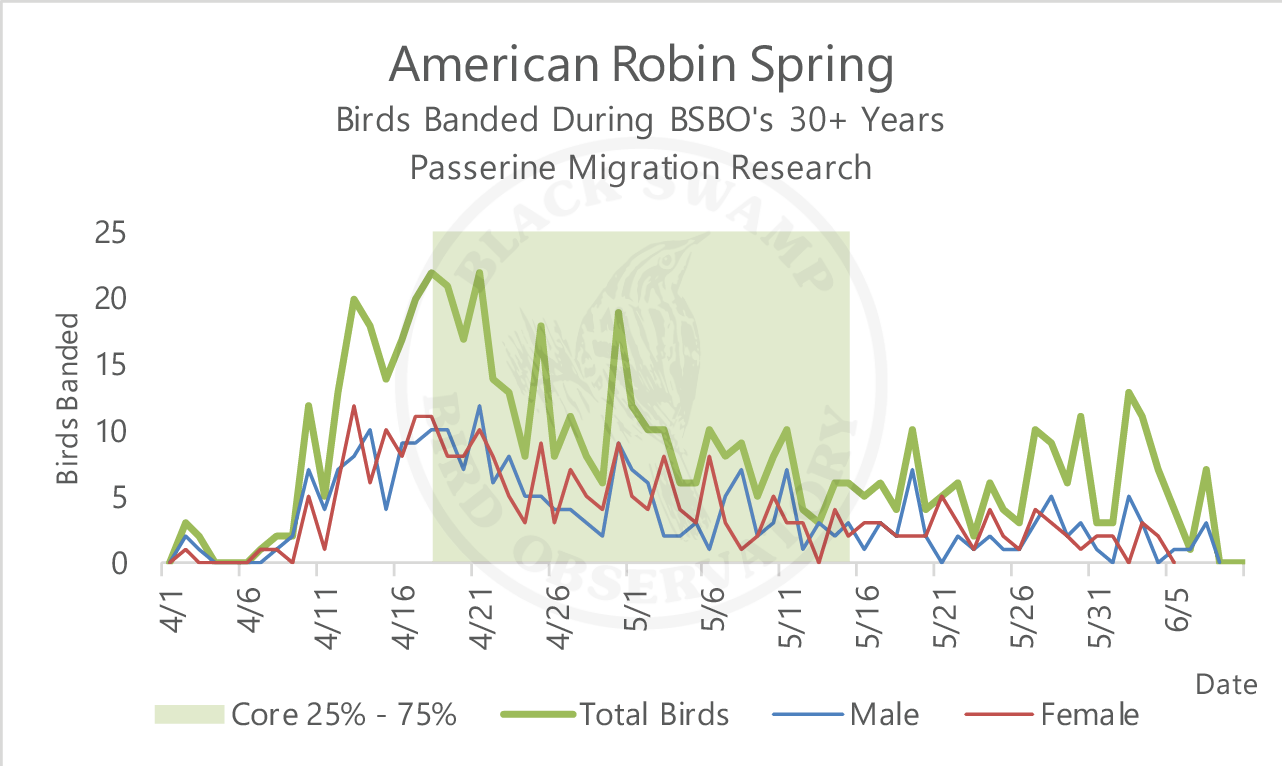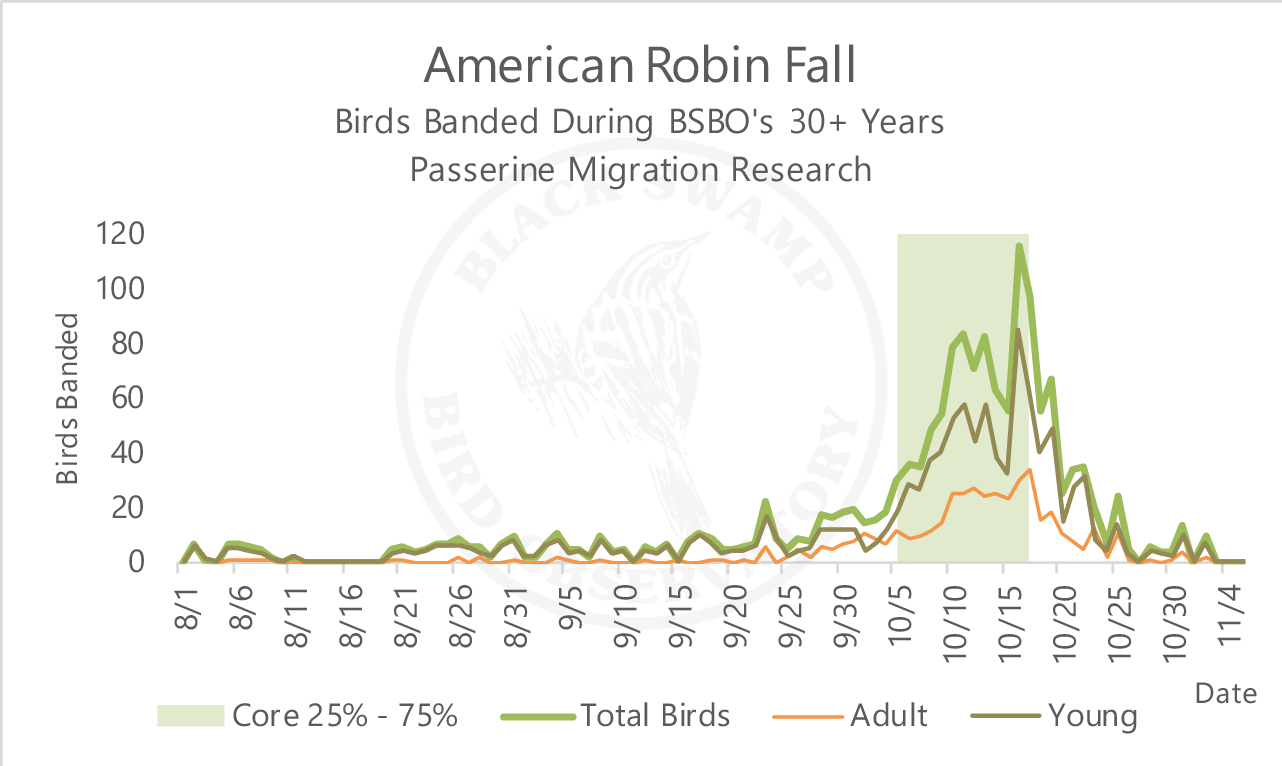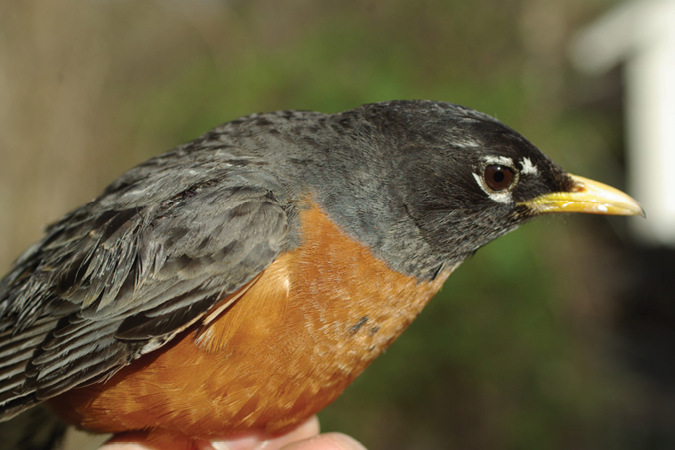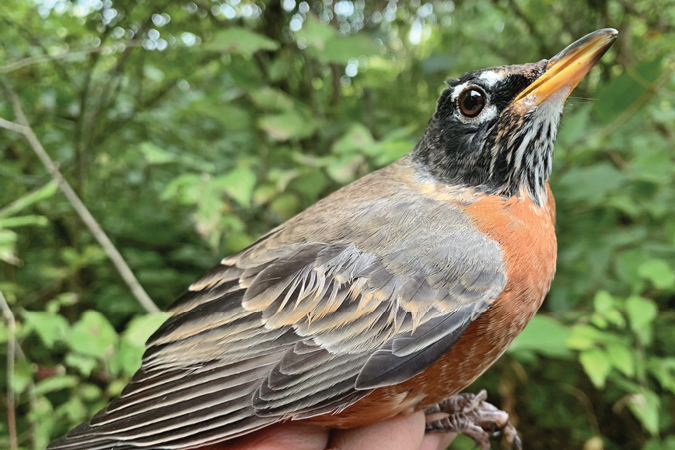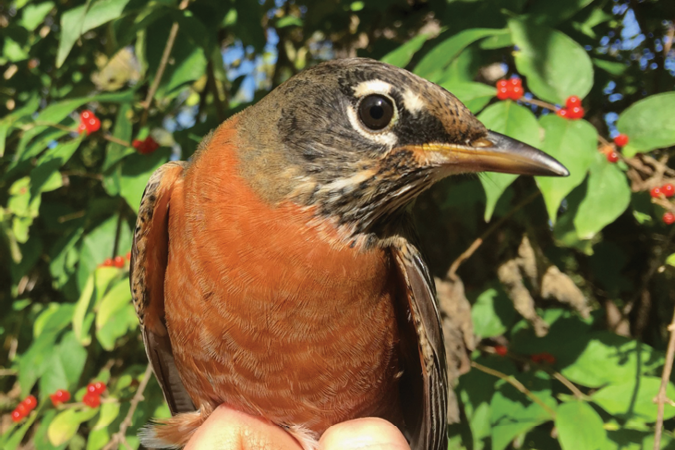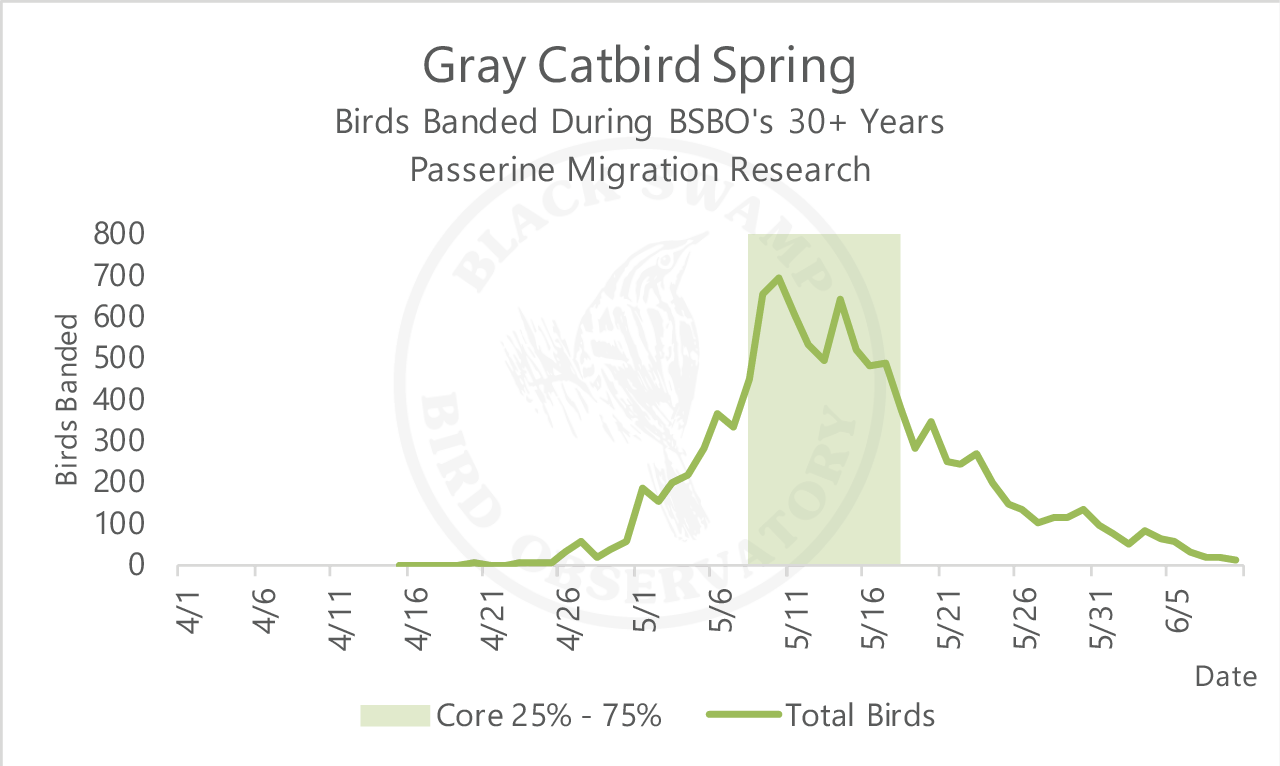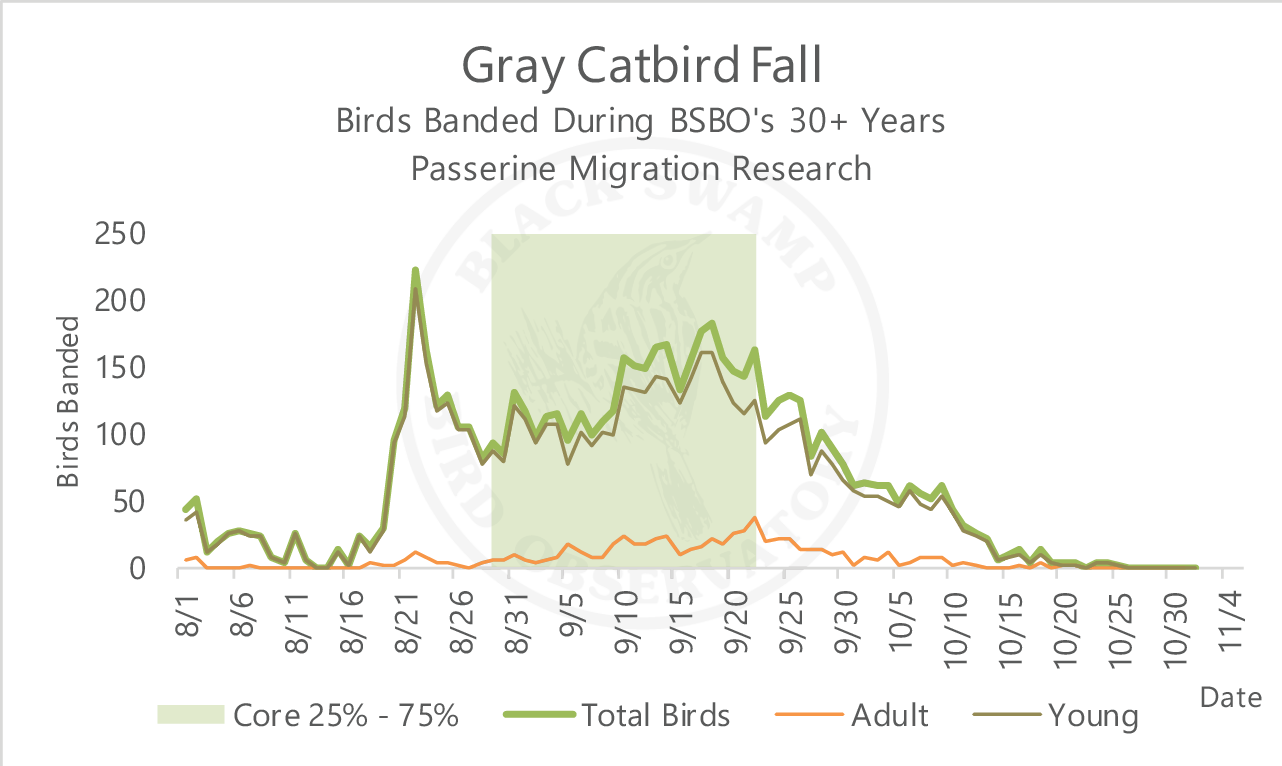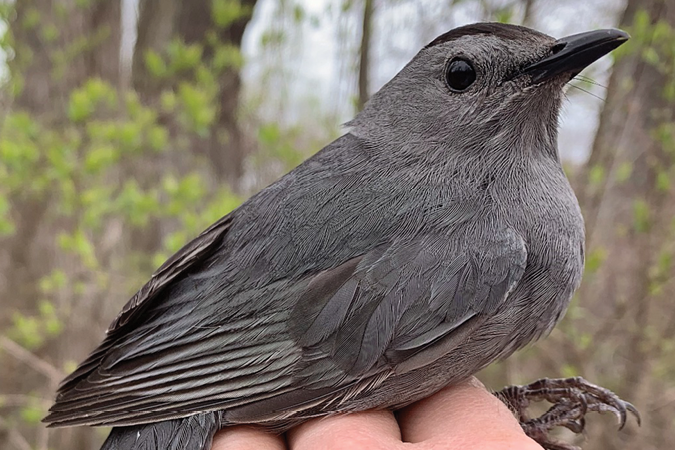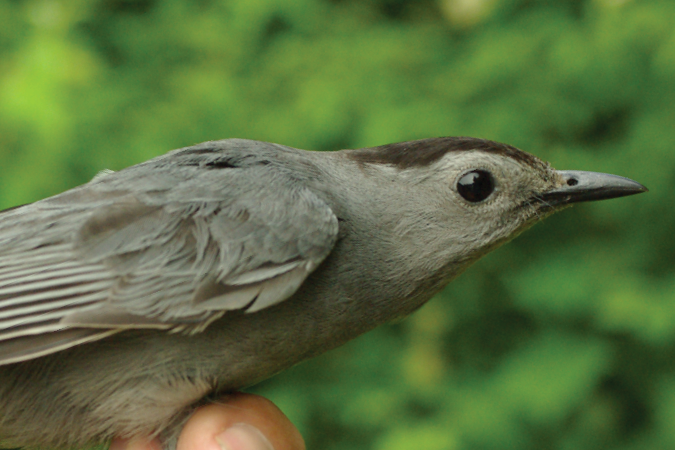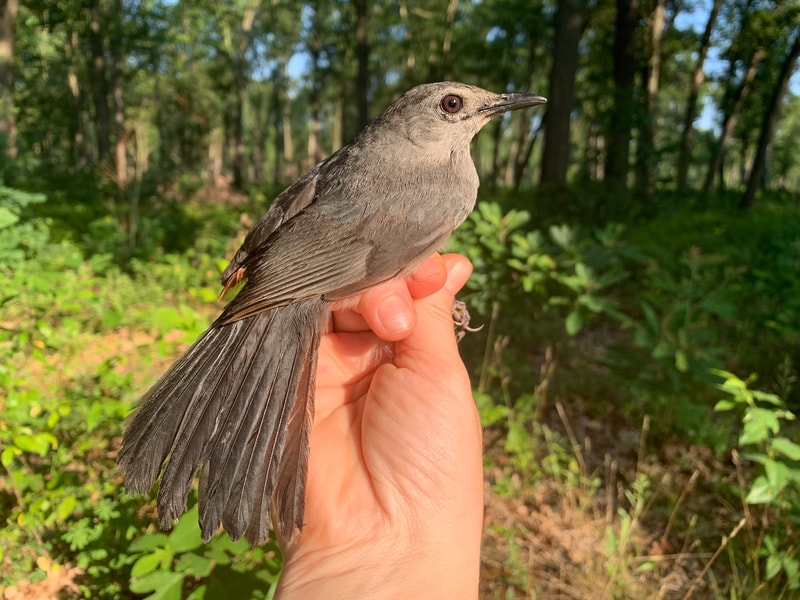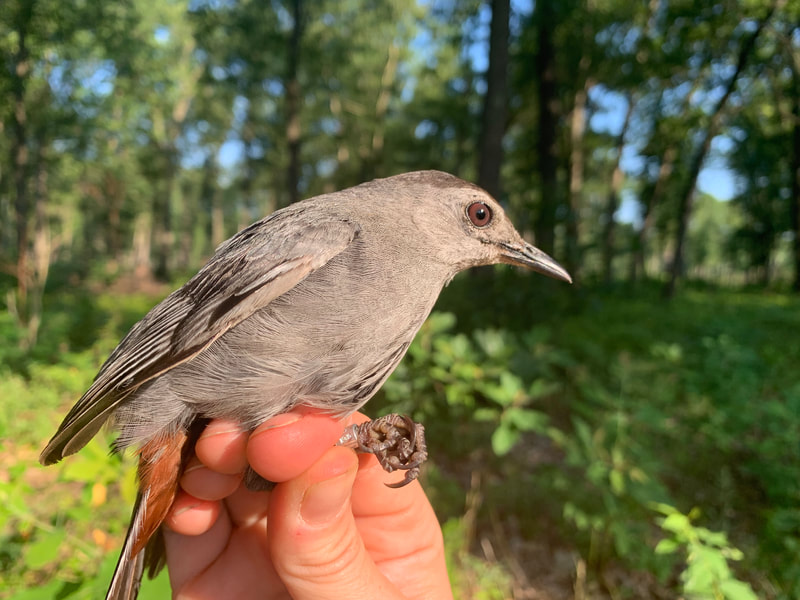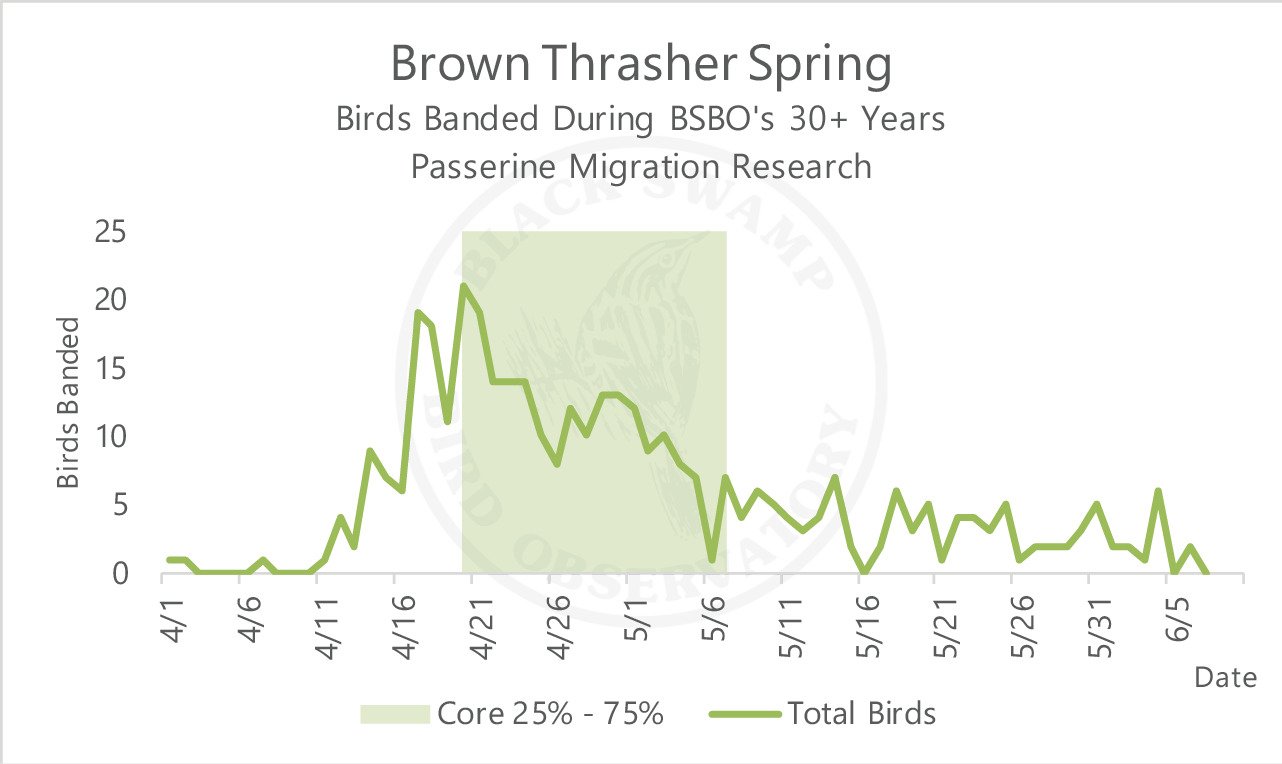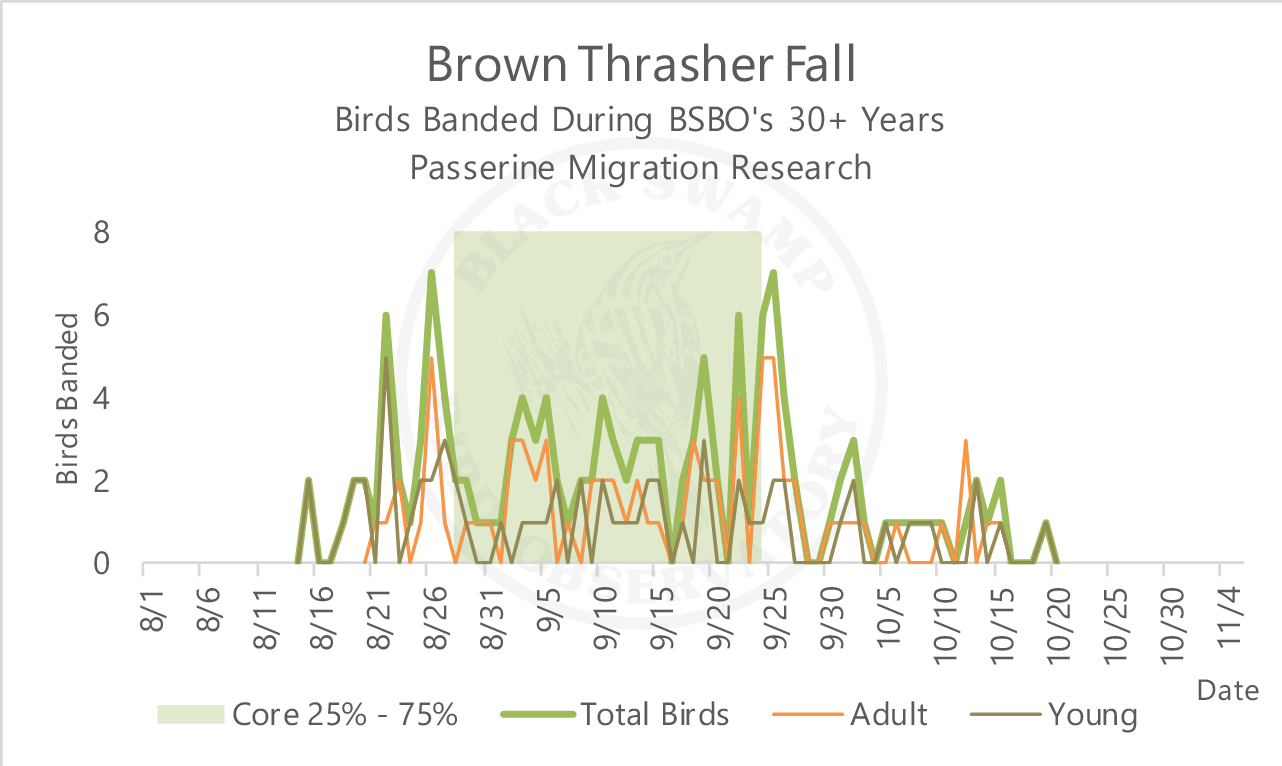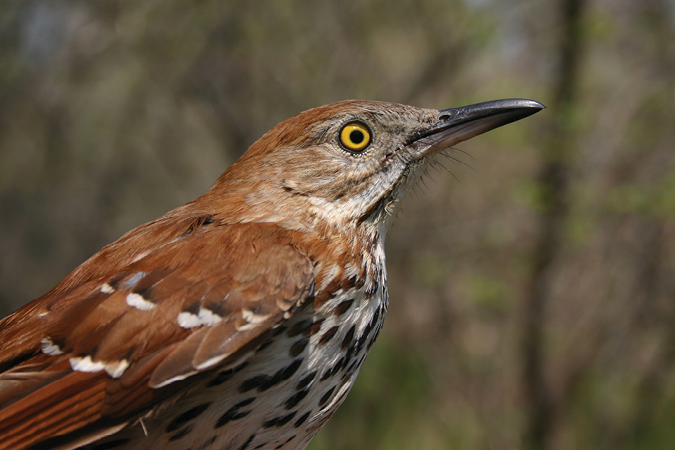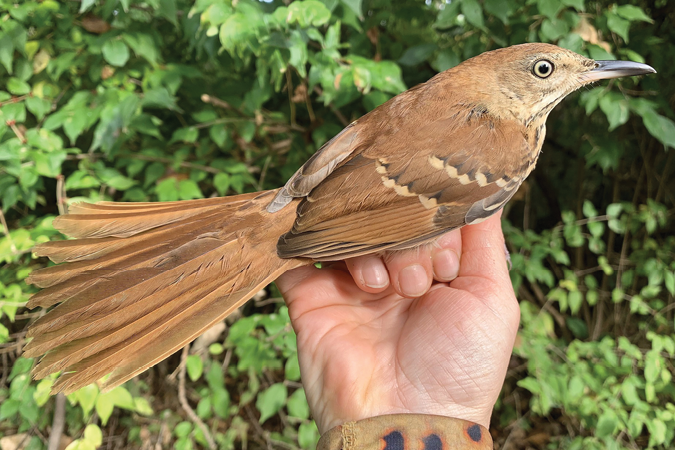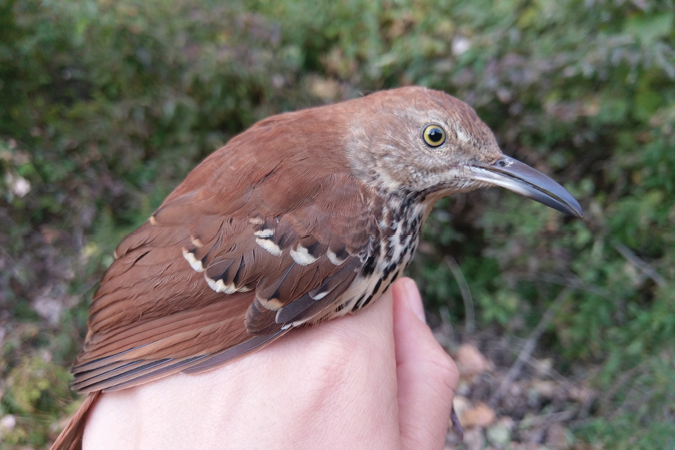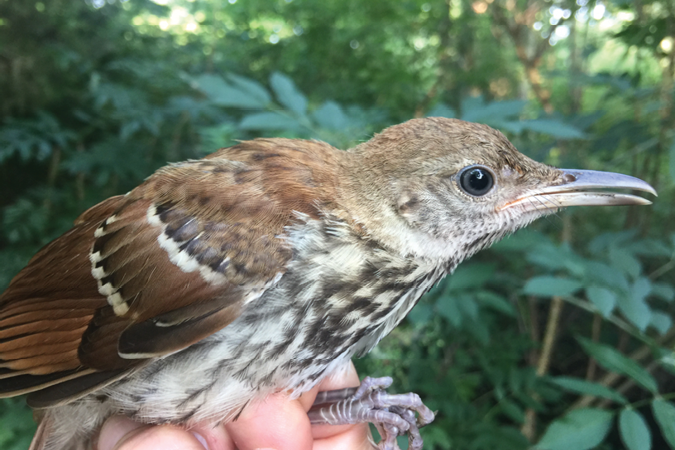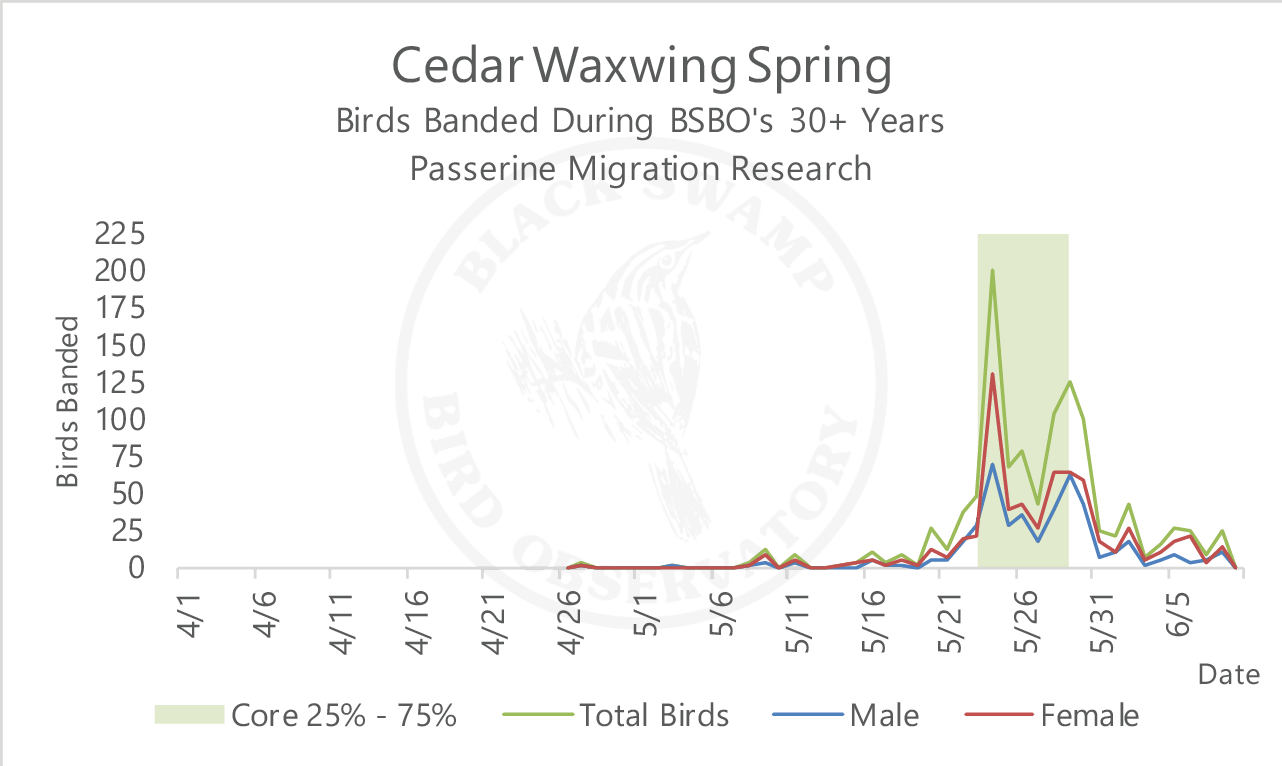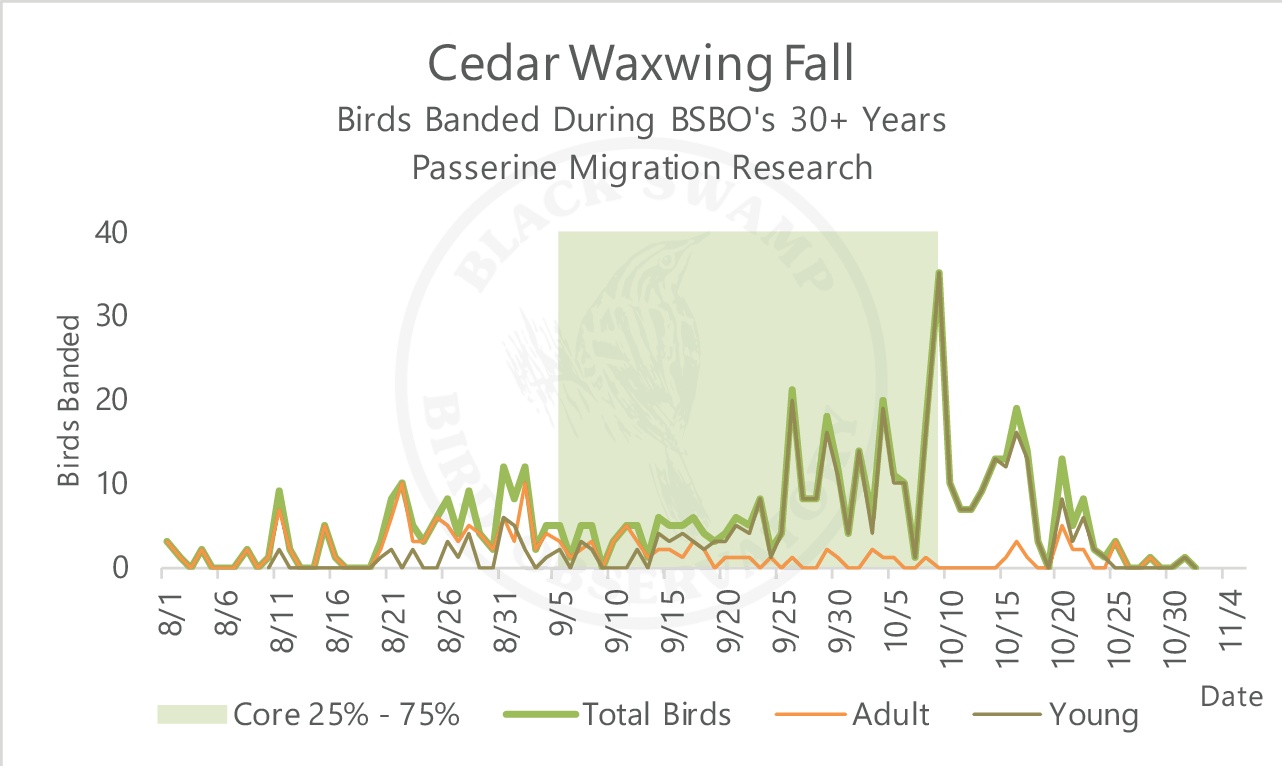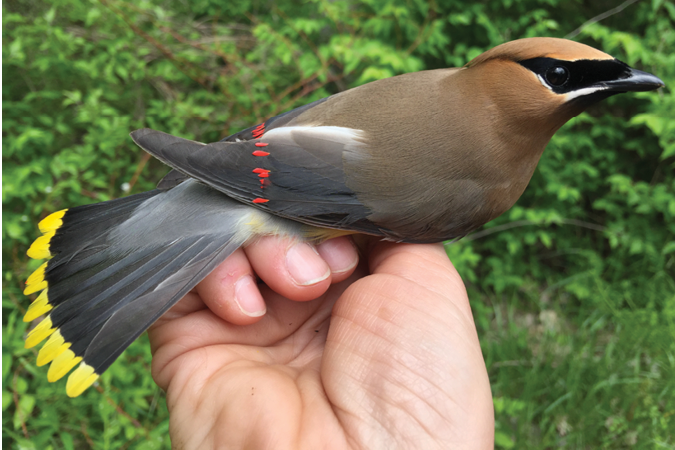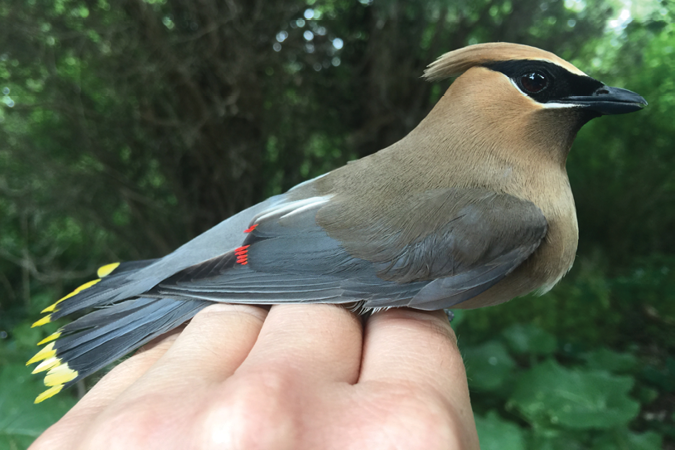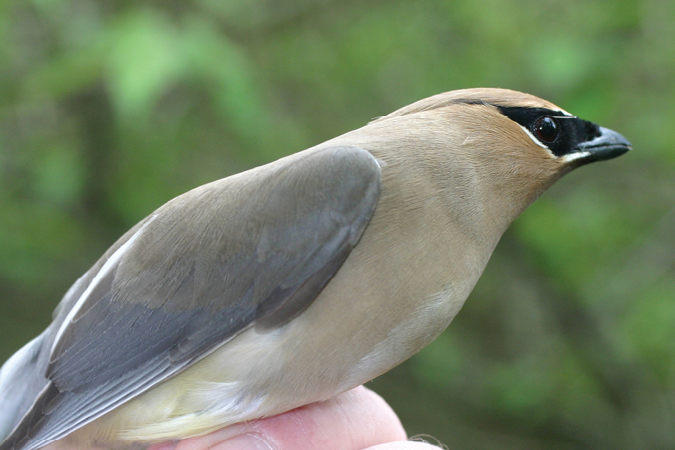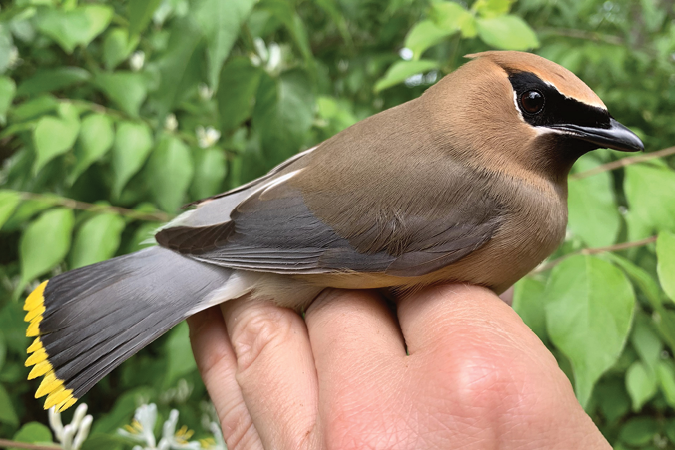Thrushes Turdidae
about thrushes in nw ohio
The Thrush family of the eastern part of North America includes one of the most recognizable species and a closely related group of similar looking but highly different birds known as the Catharus thrushes. Migrational pathways span the complete range from short-distance species that never leave the continental US to some of the longest migrations taken by landbirds. While overall this group is demure in coloration, their expansive song repertoire and ventriloquist nature is mesmerizing in a quiet woods.
The migrational timing of each thrush species is heavily influenced by whether they are making long-distance flights or short-distance ones. Their arrival to the lake shore is predictable within a few day period as day length drives the migrational urge. However, weather systems play a role in hastening or delaying their flights. In spring, intense warm fronts push movements northward for short-distance species and the neotropical species once they arrive in the US. Fall migration, generally is reversed with the last species arriving north being the first to return south, with all species making heavy use of fruit for food.
Only a portion of the species can be sexually separated during migration. However, BSBO has been working for several years to develop sex keys for the Catharus thrushes using a series of measurements and DNA from feathers. If this process works, it will provide considerable information to improve life cycle parameters for conservation actions. Analyzing the migrational timing graphs support this initiative as they generally indicate a bimodal peak likely representing males and females as is seen in other species where sexing can be done, with males migrating prior to females in most species.
While thrushes can be found nearly anywhere during migration, they tend to accumulate near the shores of Lake Erie, and are active on the ground or lower areas within the vegetation where they are more easily viewable. All species are common in migration and together cover mid-March to the end of May.
The migrational timing of each thrush species is heavily influenced by whether they are making long-distance flights or short-distance ones. Their arrival to the lake shore is predictable within a few day period as day length drives the migrational urge. However, weather systems play a role in hastening or delaying their flights. In spring, intense warm fronts push movements northward for short-distance species and the neotropical species once they arrive in the US. Fall migration, generally is reversed with the last species arriving north being the first to return south, with all species making heavy use of fruit for food.
Only a portion of the species can be sexually separated during migration. However, BSBO has been working for several years to develop sex keys for the Catharus thrushes using a series of measurements and DNA from feathers. If this process works, it will provide considerable information to improve life cycle parameters for conservation actions. Analyzing the migrational timing graphs support this initiative as they generally indicate a bimodal peak likely representing males and females as is seen in other species where sexing can be done, with males migrating prior to females in most species.
While thrushes can be found nearly anywhere during migration, they tend to accumulate near the shores of Lake Erie, and are active on the ground or lower areas within the vegetation where they are more easily viewable. All species are common in migration and together cover mid-March to the end of May.
Veery Catharus fuscescens
|
Alpha Code: VEER Spanish: Zorzal Rojizo French: Grive fauve Band Size: 1B NW Ohio Status: Migrant, Breeding-local Total Banded in Spring: 2,364 Average Banded in Spring: 79 Total Banded in Fall: 604 Average Banded in Fall: 21 |
Song: a rich, metallic, downward spiral; common call is an abrupt veer
Description: Cinnamon-brown above with white underparts and a creamy wash and diffuse spots on breast. Indistinct whitish eyering. Buffy-orange throat fades into cinnamon-brown face. Male and female alike throughout the year. Spring Migration Timing: Second wave, with birds first arriving around May 1 and the peak of total birds occurring May 8-18. |
Fall Migration Timing: Fairly condensed, with most movement occurring between late August and late September and the peak of total birds occurring September 2-15.
Migration Habitat: Thick undergrowth of primarily deciduous forests but also dense vegetation of clearings adjacent to forest. |
Gray-cheeked Thrush Catharus minimus
|
Alpha Code: GCTH Spanish: Zorzal de Cara Gris French: Grive à joues grises Band Size: 1B NW Ohio Status: Migrant Total Banded in Spring: 1,132 Average Banded in Spring: 38 Total Banded in Fall: 5,192 Average Banded in Fall: 179 |
Song: burry flute-like notes descending at end; common call is a whiny wheer
Description: Brownish-gray above with white underparts and variably dark spots on breast. Sometimes with a faint buffy wash to breast. Eyering mostly absent. Gray face. Male and female alike throughout the year. Spring Migration Timing: Second into third wave, with birds making an initial surge around May 10 and the peak of total birds occurring May 12-25. |
Fall Migration Timing: Fairly condensed, with most movement occurring between mid-September and mid-October, and the peak movement of total birds occurring September 18 through October 1.
Migration Habitat: Dense undergrowth of woodlands and adjacent thick brush, and even backyards with minimal trees. |
Swainson's Thrush Catharus ustulatus
|
Alpha Code: SWTH Spanish: Zorzal de Swainson French: Grive à dos olive Band Size: 1B NW Ohio Status: Migrant Total Banded in Spring: 7,434 Average Banded in Spring: 248 Total Banded in Fall: 13,917 Average Banded in Fall: 480 |
Song: flute-like series of notes spiraling upward; common calls include a liquid pit and a hollow weep
Description: Olive-brown above with white underparts and a buffy wash and dark spots on breast. Face tannish with cream accents. Creamy eyering. Male and female alike throughout the year. Spring Migration Timing: Second into third wave, with birds first appearing heavily around May 10 and peak movement of total birds occurring May 13-25. |
Fall Migration Timing: Fairly extensive, with birds moving from late August into early October and the peak movement of total birds occurring September 11-26.
Migration Habitat: Variety of woodlands and clearings adjacent to forests, and even backyards with minimal trees. |
Hermit Thrush Catharus guttatus
|
Alpha Code: HETH Spanish: Zorzal de Cola Rufa French: Grive solitaire Band Size: 1B NW Ohio Status: Migrant, Winter Total Banded in Spring: 4,231 Average Banded in Spring: 141 Total Banded in Fall: 5,370 Average Banded in Fall: 185 |
Song: an initial clear whistle followed by softer, echo-like tremolos; common calls include a low chup and a screechy eeee
Description: Warm brown above with white underparts and a creamy wash and dark spots on breast. Dark breast spots lead to dark lines bordering white throat. Variably distinct cream eyering. Only thrush with brown back and reddish rump and tail. Male and female alike throughout the year. Spring Migration Timing: First wave, with activity rising in early April and peak movement of total birds occurring April 18-30. |
Fall Migration Timing: Late and condensed with most activity occurring in October and the peak movement of total birds occurring October 9-19.
Migration Habitat: Variety of woodlands and adjacent clearings including backyards. |
Wood Thrush Hylocichla mustelina
|
Alpha Code: WOTH Spanish: Zorzal Maculado French: Grive des bois Band Size: 1A NW Ohio Status: Migrant, Breeding Total Banded in Spring: 877 Average Banded in Spring: 29 Total Banded in Fall: 183 Average Banded in Fall: 6 |
Song: melodious, flute-like phrases including ee-oh-lay; common calls include a low bup-bup-bup and an excited, bubbling pit-pit-pit
Description: Reddish-brown above with white underparts and bold black spots on breast and sides. White eyering. White face with blurry dark streaks. Male and female alike throughout the year. Spring Migration Timing: Second wave, with birds first appearing in late April and the peak movement of total birds occurring May 3-13. |
Fall Migration Timing: Fairly extensive, with birds appearing from late August into mid-October
Migration Habitat: Variety of predominately deciduous woodlands with dense or sparse undergrowth including backyards. |
American Robin Turdus migratorius
|
Alpha Code: AMRO Spanish: Mirlo Primavera French: Merle d’Amérique Band Size: 2 NW Ohio Status: Present all year Total Banded in Spring: 655 Average Banded in Spring: 22 Total Banded in Fall: 1,808 Average Banded in Fall: 62 |
Song: rich, musical notes rising and falling in pitch cheer-up, cheerily, cheer-up, cheerily; common calls include a sharp yeep and chuckling chirr
Spring Description: Grayish above with rusty-orange underparts. Yellow bill. White eye arcs. Male with blackish hood and rich orange underparts. Female with dark gray to brownish hood and orange underparts. Much overlap can occur among sexes. Spring Migration Timing: Movement actually begins in March as birds steadily move around the landscape. Peak activity in April occurring 12-26 as migrants pass through and breeding birds settle into territories. |
Fall Description: Adult male and female similar to spring but paler. Young birds mostly brown-gray above with light tipping to much of pale orange breast feathers.
Fall Migration Timing: Present throughout fall with activity rising in mid-October as birds begin flocking and descending to lower levels from the canopy. Migration Habitat: Common in a wide variety of habitats (particularly near fruiting trees) including forests, urban parks, cities, and backyards. |
Mimids Mimidae
about mimids in nw ohio
The mimids and thrashers are songsters of the highest order with complex arrays of vocalizations and impersonations. Across the US, mimids are resident or short-distance migrants, with Gray Catbird being the only species that migrates as far south as Central America and the West Indies during winter. In our region, this family is represented by three species, all of which in general retreat to the south during winter although many individuals remain here through out it. Of these, Northern Mockingbird is only rarely encountered during migration and the breeding season in Northwest Ohio, hence its absence from our profiles due to lack of data.
Mimids are medium-sized songbirds with relatively long tails, short wings, and a long, often decurved bill that fits well for their omnivorous lifestyle. These are birds of forest understory, edge habitats, scrubby overgrowth, and thickets. The mimids and thrashers do not show dimorphism (plumage differences) between the sexes and don’t show obvious bimodal peaks to their migrational timing.
Mimids are medium-sized songbirds with relatively long tails, short wings, and a long, often decurved bill that fits well for their omnivorous lifestyle. These are birds of forest understory, edge habitats, scrubby overgrowth, and thickets. The mimids and thrashers do not show dimorphism (plumage differences) between the sexes and don’t show obvious bimodal peaks to their migrational timing.
Gray Catbird Dumetella carolinensis
|
Alpha Code: GRCA Spanish: Maullador Gris French: Moqueur chat Band Size: 1A NW Ohio Status: Migrant, Breeding, Winter-rare Total Banded in Spring: 12,265 Average Banded in Spring: 409 Total Banded in Fall: 8,219 Average Banded in Fall: 283 |
Song: series of rapid whistles, squeaks, and whines; common call is a catlike meyew influencing the bird’s name
Description: Smooth gray overall. Dark cap sits above a dark eye. Rufous undertail coverts set off a long, dark tail. Male and female alike throughout the year. Spring Migration Timing: Primarily second wave, with many beginning to arrive by early May, and peak numbers occurring May 9-18. |
Fall Migration Timing: Rather prolonged and present throughout much of fall, with a notable increase in late August as young birds from the local area gather heavily, and another notable surge in mid- to late September by migrants.
Migration Habitat: A bird of low shrubs and woodland edges. Often found in urban parks and backyards. |
Brown Thrasher Toxostoma rufum
|
Alpha Code: BRTH Spanish: Cuitlacoche Rojizo French: Moqueur roux Band Size: 2 ~ 3 NW Ohio Status: Migrant, Breeding, Winter-rare Total Banded in Spring: 443 Average Banded in Spring: 15 Total Banded in Fall: 159 Average Banded in Fall: 5 |
Song: series of short, melodious whistles, with each phrase typically given twice
Description: A rather large, yellow-eyed songbird. Bright rufous above and white below with extensive dark streaking on the breast and sides. Two wingbars reside on each wing. An exceptionally long, rufous tail trails behind. Male and female alike throughout the year. Spring Migration Timing: First wave, beginning to appear in mid-April. Peak movements occur from April 20 through May 7. |
Fall Migration Timing: Low and protracted. The majority of these birds begin to arrive by late August, and peak until the third week of September.
Migration Habitat: A ground foraging bird of low thickets, and can be seen in open areas close to woodland edges. Often found singing on high, exposed perches. |
Waxwings Bombycillidae
about waxwings in nw ohio
Waxwings are gregarious, frugivorous wanderers who opportunistically move about the landscape wherever they occur. In our region, Bohemian Waxwing is a very rare winter visitor, while the familiar Cedar Waxwing is present throughout the year in at least some capacity. Though the species can often disappear for months at a time between November and May, Cedar Waxwings can appear out of the ether at fruit sources anytime in late fall, winter, and early spring, decimating a berry source in hours or days and moving on as quickly as they arrived. Due to their reliance on fruit, they are also one of the last species to initiate breeding, and hence their true migratory movements occur during late spring/third wave. Because of their penchant for fruit, Cedar Waxwings can be found in backyards, overgrown orchards and thickets, cemeteries, and almost anywhere else significant and reliable fruiting trees occur. When Bohemian Waxwings appear in Ohio, they often show up in cemeteries and other places where fruiting trees are numerous and well-established.
Cedar Waxwing Bombycilla cedrorum
|
Alpha Code: CEDW Spanish: Ampelis Chinito French: Jaseur d’Amérique Band Size: 1B NW Ohio Status: Migrant, Present all year-irregularly Total Banded in Spring: 1,278 Average Banded in Spring: 43 Total Banded in Fall: 635 Average Banded in Fall: 22 |
Song: high-pitched, trilled bzeee and a short, clear whistle
Description: Warm tan head and upper breast, pale yellow belly, and gray wings and tail. Tail with yellow to orange tips. Extended shafts of inner secondaries tipped in waxy red. Black face mask outlined in white. Male with black chin. Female with dusky chin. Male shows more red tips and longer tail tips than female. Young birds in fall and spring usually without red tips. Spring Migration Timing: Late. Although CEDW may be present throughout spring, flocks become more active toward the end of May into June, with flocks increasing around May 21. |
Fall Migration Timing: Present throughout much of fall, heightened movement occurs around September 25 as young birds become more mobile and flocks begin to amass.
Migration Habitat: Wide variety of semi-open and forest edge habitats, particularly near fruiting trees and berries. Notes: Nests late to coincide with late summer/early fall berry development. Because of this late timing, activity in spring extends into June and into November during fall. As a diurnal migrant, CEDW can be seen in large foraging flocks during spring, following the Lake Erie shoreline. |
